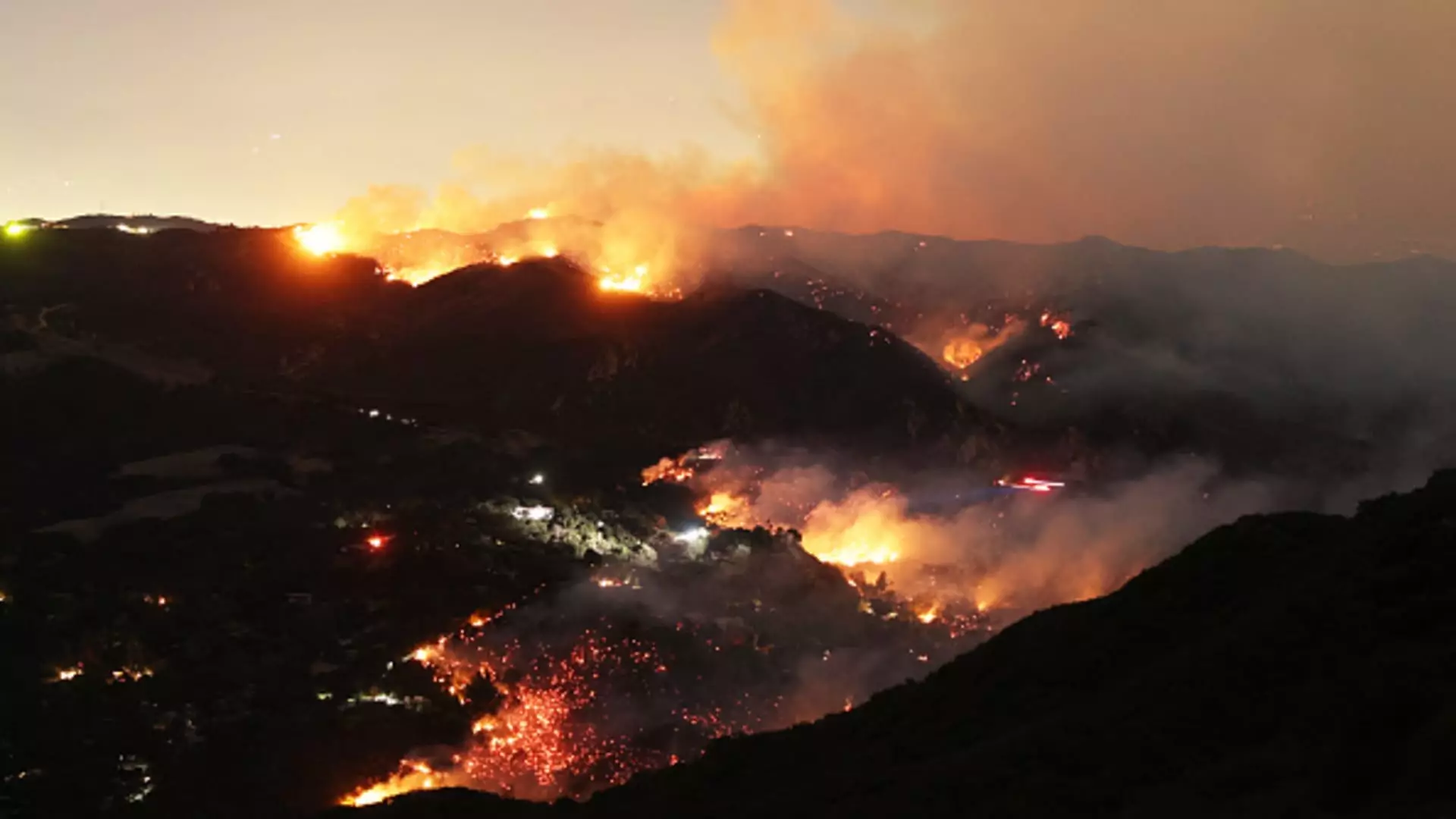In the recent disasters that struck Southern California, the Greater Los Angeles area has become the epicenter of unprecedented wildfire activity. With flames consuming over 40,000 acres and obliterating more than 12,300 structures, the crisis has left approximately 88,000 residents under evacuation orders and an additional 89,000 in warning zones. As these fires continue to pose a significant threat, the community and local authorities are working around the clock to contain the devastation, yet the toll on lives and property is substantial.
In stark terms, the financial impact is staggering, with estimates from financial institutions like JPMorgan and Wells Fargo suggesting that the insured losses could reach an eye-watering $20 billion. The enduring question for those affected by the inferno is not just about safety but also about the recovery process and how best to navigate the complexities of insurance claims and emergency assistance.
For residents grappling with the aftermath of the wildfires, one of the most critical first steps is addressing their insurance claims promptly. Experts like Karl Susman, a seasoned insurance broker, emphasize the importance of initiating the claims process even while the fires are still being extinguished. “Get your claim filed as quickly as you can,” he advises, recognizing that many may not have all necessary documentation handy but can still start the process.
This urgency stems from the reality that insurance companies are likely experiencing an unprecedented influx of claims. Delays are inevitable, and getting ahead in the queue could make a substantial difference in recovery efforts for affected families. The ability to file a claim doesn’t rely solely on having complete information—timing is essential.
Homeowners and renters alike are affected by these catastrophic events, yet the steps for initiating claims remain fundamentally similar. Shannon Martin, an insurance agent, highlights that even renters should follow a structured approach. First and foremost, ensuring personal safety must be the priority. Following that, setting up an insurance claim becomes pivotal, with an added focus on eligible additional living expenses, as many may find themselves temporarily displaced.
Experts recommend that while navigating this daunting landscape, policyholders should inquire specifically about “loss of use” coverage. This feature can facilitate secured temporary lodging and provide critical financial support during displacement. Both renters and homeowners can avail themselves of these benefits, creating a lifeline during an otherwise chaotic period.
Keeping organized documentation of expenses incurred and all interactions with insurance companies can significantly streamline the recovery process. Information retention is crucial; according to Douglas Heller from the Consumer Federation of America, accurate records can help bolster claims for reimbursements. Document everything meticulously—from receipts for necessities like clothing and food to logs of conversations with insurers. A well-documented claim not only legitimizes the process but also expedites recovery efforts.
In the unfortunate event of severe damage or a total loss, taking prompt action to disconnect utilities is also vital. Susman notes that notifying providers can sometimes absolve residents from accruing unnecessary charges during a period of instability and uncertainty.
A common misconception during such disasters is the understanding of coverage types. For instance, those who may have lost vehicles in the fire can find solace in their auto insurance policies, provided they possess comprehensive coverage. Furthermore, the nuances of property tax adjustments for homes that sustained significant losses can be a resource overlooked by many. Filing for these adjustments through county assessor websites could lighten financial burdens during recovery.
For those exposed to these wildfires without prior insurance, hope exists in various assistance programs. Federal aid has been initiated, with President Biden announcing funds through FEMA designed to aid survivors. The Individuals and Households Program offers critical resources for temporary housing, and local workshops, like those organized by the California Insurance Commission, are attractive avenues for affected residents to connect with essential recovery resources.
In the wake of these disasters, community support plays a fundamental role. Charities and local organizations have activated recovery initiatives, aiding those in need through donations and services. Residents are encouraged to seek local support groups and workshops aimed specifically at navigating this recovery. The path forward is undoubtedly challenging, but the collaborative spirit of the community can serve as a source of strength and resilience.
Overall, the wildfire crisis in Southern California has stripped countless families of their homes and livelihoods. However, by understanding insurance processes, organizing documentation, and leveraging community support systems, affected individuals can begin to rebuild their lives and find a semblance of hope amid the devastation.

